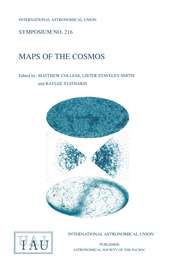Article contents
Faint Optical Line Emission from the Diffuse Interstellar Medium: Observations and Implications
Published online by Cambridge University Press: 08 February 2017
Abstract
Diffuse galactic Hα emission appears to cover the entire sky with an intensity that ranges from 3–12 R near the galactic equator to 0.25–0.8 R near the galactic poles. Observations of this H-recombination line and the forbidden lines, [S II] 6716 Å, [N II] 6583 Å, and [O III] 5007 Å, indicate that the emission originates from a low-density, 2–3 kpc thick layer of warm (~104 K), ionized interstellar gas that has an emission-line spectrum significantly different from that of the traditional, more localized H II regions. Along a line perpendicular to the galactic disk, the mean emission measure of this layer is 4.5 cm−6 pc, and the column density of the H+ is 2 × 1020 cm−2. The origin of this diffuse ionization is not yet clear; however, its existence requires the equivalent of about 14% of the total ionizing photon flux from O stars or nearly all of the power injected into the ISM by supernova. This optically emitting gas also may be a nonnegligible source of diffuse emission in the far ultraviolet (FUV) and infrared (IR).
- Type
- III. Diffuse Galactic Radiation from Dust and Gas: Observations and Models
- Information
- Copyright
- Copyright © Kluwer 1990
References
REFERENCES
- 1
- Cited by


